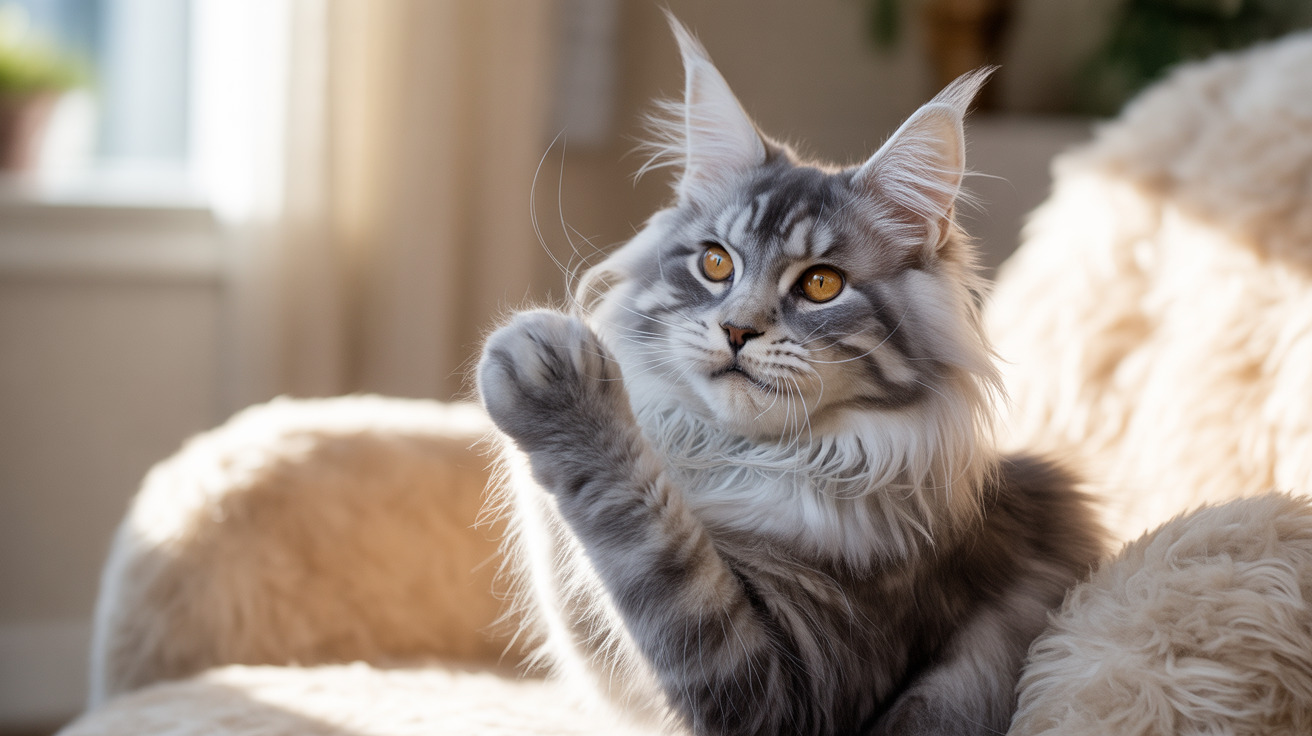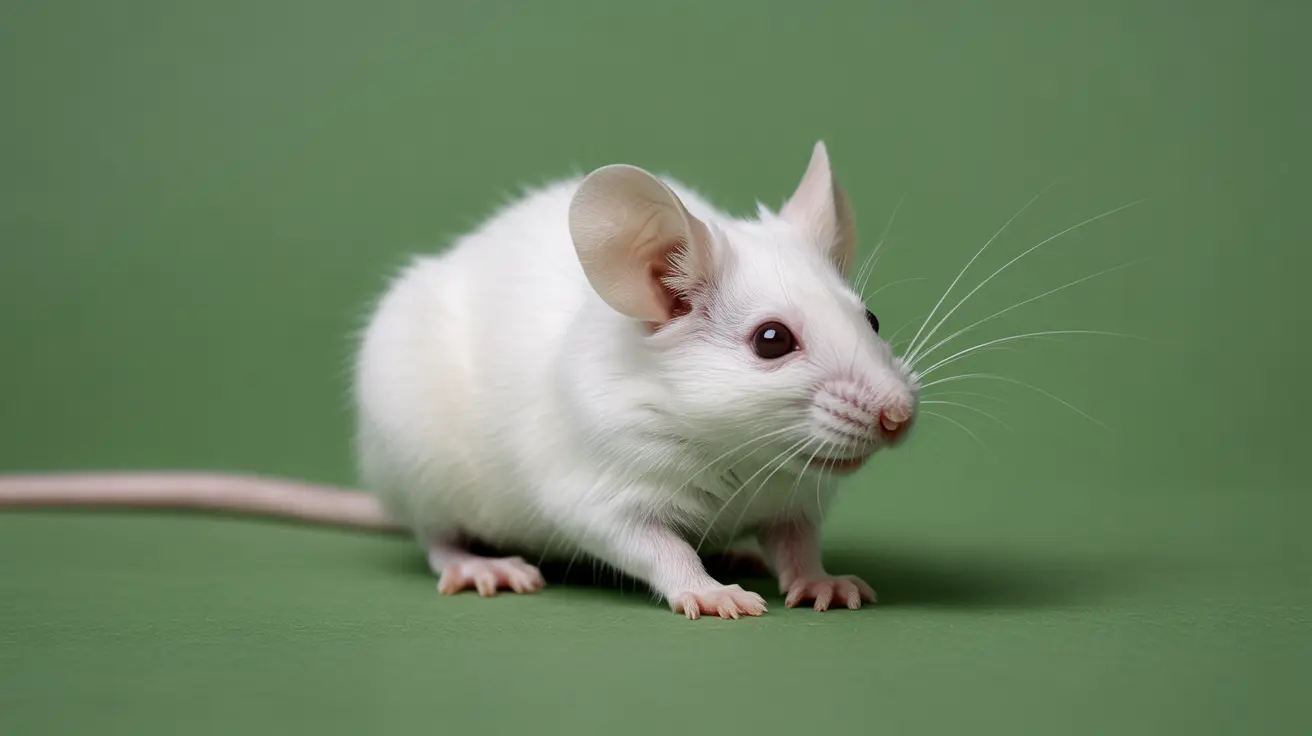Understanding Feline Herpesvirus Infection Management: A Complete Guide for Cat Owners
Feline herpesvirus infection management has become increasingly important for cat owners as this highly contagious virus affects millions of cats worldwide. Also known as feline viral rhinotracheitis (FVR), this condition is caused by feline herpesvirus type-1 (FHV-1) and represents one of the most common causes of upper respiratory disease and conjunctivitis in both domestic and wild cats. Understanding this lifelong condition is crucial for providing the best possible care for your feline companion.
This comprehensive guide will equip you with essential knowledge about feline herpesvirus infection management, covering everything from recognizing early symptoms to implementing effective treatment strategies. Whether you're a new cat owner, veterinary professional, or managing multiple cats, you'll discover practical approaches to minimize the impact of this persistent virus on your cat's health and quality of life.
What Is Feline Herpesvirus and How Does It Affect Cats?
Feline herpesvirus type-1 (FHV-1) is a species-specific virus that belongs to the herpesvirus family, characterized by its protein capsid and protective outer envelope. This structural composition makes the virus relatively fragile in the environment but highly effective at establishing lifelong infections in cats. The virus primarily targets the nasal passages, respiratory tract, and ocular tissues, making it a significant cause of upper respiratory infections commonly referred to as "cat flu."
What makes feline herpesvirus particularly challenging is its ability to establish latent infections. After the initial acute phase, which typically lasts 10 to 20 days, the virus retreats to nerve cells where it remains dormant. This latent phase means that infected cats become lifelong carriers, capable of shedding the virus intermittently without showing obvious symptoms. The virus can reactivate during periods of stress, illness, or immunosuppression, leading to renewed viral shedding and potential transmission to other cats.
The Structure and Survival of Feline Herpesvirus
The herpesvirus structure directly impacts both its infection capability and environmental stability. The outer envelope makes the virus susceptible to desiccation and common household disinfectants, including diluted bleach solutions (1 part bleach to 32 parts water). While viral particles can survive on moist surfaces such as food bowls, litter boxes, and toys for up to 18 hours, they die quickly when exposed to dry conditions. This fragility is actually advantageous for infection control, as thorough cleaning with hot water and detergent, combined with proper disinfection, can effectively eliminate the virus from contaminated environments.
Recognizing the Symptoms of Feline Herpesvirus Infection
Effective feline herpesvirus infection management begins with early recognition of clinical signs. The symptoms can vary significantly depending on the cat's age, immune status, and whether this is a primary infection or a reactivation episode. The incubation period typically ranges from two to five days, during which cats can already spread the virus to other felines.
Primary Symptoms
The most common symptoms of feline herpesvirus infection include:
- Sneezing and nasal congestion
- Clear to thick, purulent nasal discharge
- Conjunctivitis with excessive blinking and squinting
- Eye discharge ranging from clear to thick and colored
- Fever and lethargy
- Loss of appetite (anorexia)
- Enlarged lymph nodes
Severe Complications
In more severe cases, particularly in young kittens or immunocompromised cats, feline herpesvirus can cause:
- Keratitis and corneal ulcers, potentially leading to permanent eye damage
- Chronic dry eye conditions
- Nasal and sinus deformities that predispose cats to ongoing respiratory problems
- Secondary bacterial infections requiring antibiotic treatment
- In rare cases, pneumonia or fatal complications
Understanding Transmission and Risk Factors
Feline herpesvirus spreads through direct contact with virus particles present in saliva and discharges from infected cats' eyes and nose. Transmission occurs via direct cat-to-cat contact or through contaminated objects such as clothing, dishes, furniture, or toys. Most cats become infected early in life, often from their mothers during the first few weeks of life.
Cats in high-density environments such as shelters, boarding facilities, multi-cat households, or cat shows face the highest risk of exposure. Young kittens up to three months old are particularly susceptible due to their developing immune systems, while stressed older cats and those with chronic diseases also face increased vulnerability to severe infections.
The Role of Stress in Viral Reactivation
Understanding the relationship between stress and viral reactivation is crucial for effective feline herpesvirus infection management. Common stress triggers that can lead to viral shedding include:
- Changes in environment or routine
- Introduction of new pets
- Boarding or travel
- Concurrent illnesses
- Corticosteroid treatments
- Poor nutrition or inadequate care
Diagnostic Approaches for Feline Herpesvirus
Diagnosis of feline herpesvirus infection is often presumptive, based on clinical signs and the cat's history, particularly when corneal infections are present. Veterinarians may employ several diagnostic tools to confirm the presence of the virus and assess the extent of the infection.
Laboratory Testing Methods
PCR (polymerase chain reaction) testing represents the most reliable diagnostic approach, detecting viral DNA in samples collected from the nose, eyes, or throat. However, it's important to note that PCR testing can be less effective when the virus is in its latent phase, and positive results don't always correlate with active disease since many healthy cats are carriers.
Additional diagnostic procedures may include:
- Fluorescein staining to identify corneal ulcers
- Schirmer tear tests to assess tear production
- Histopathologic examination revealing characteristic intranuclear viral inclusion bodies in respiratory epithelial cells
- Immunofluorescence testing for rapid virus detection
Comprehensive Treatment and Management Strategies
Since no cure exists for feline herpesvirus, effective feline herpesvirus infection management focuses on controlling symptoms, preventing secondary complications, and supporting the cat's overall health. Treatment approaches vary depending on the severity of symptoms and the individual cat's needs.
Symptomatic and Supportive Care
The foundation of treatment involves comprehensive supportive care:
- Maintaining proper hydration through increased water intake or subcutaneous fluids
- Encouraging appetite with highly palatable, warmed canned food
- Providing a stress-free, comfortable environment
- Using humidification or steam inhalation to alleviate respiratory congestion
- Ensuring good hygiene and gentle cleaning of eye and nasal discharge
Antiviral Medications
Oral antiviral medications such as famciclovir have shown effectiveness in managing recurrent conjunctivitis and reducing viral shedding. Topical antiviral medications may be prescribed specifically for eye infections, helping to control corneal involvement and prevent permanent damage.
Managing Secondary Bacterial Infections
Secondary bacterial infections are common complications requiring antibiotic treatment. Commonly prescribed antibiotics include doxycycline, azithromycin, or amoxicillin-clavulanate. When administering doxycycline, it's crucial to use liquid formulations to prevent esophageal damage, and the medication should always be followed by food or water.
Supplemental Therapies
Several supplemental therapies may support immune function and reduce illness duration:
- L-lysine supplementation, though evidence for its efficacy remains mixed
- Probiotics such as FortiFlora to support digestive and immune health
- Polyprenyl immunostimulant, which shows promise in reducing disease severity
- Nebulization therapy to help clear respiratory congestion
Vaccination Strategies and Prevention
Vaccination represents the cornerstone of feline herpesvirus infection management and prevention. Core feline vaccines include protection against FHV-1, typically administered as part of a combination vaccine that also protects against other common feline pathogens.
Vaccination Protocols
Vaccination should begin at 8 weeks of age, with boosters administered according to your veterinarian's recommendations. While vaccination doesn't completely prevent infection, it significantly reduces disease severity and duration. Cats that are carriers may particularly benefit from frequent intranasal vaccine boosters, which can help reduce virus reactivation and shedding.
Injectable vs. Intranasal Vaccines
Both injectable and intranasal vaccines are available, each with distinct advantages:
- Injectable vaccines: Administered subcutaneously or intramuscularly, these provide systemic immunity and are suitable for most cats
- Intranasal vaccines: Provide more rapid local immunity and may be particularly beneficial for cats in high-risk environments like shelters
Your veterinarian will recommend the most appropriate vaccination protocol based on your cat's risk factors, age, and health status.
Preventing Transmission in Multi-Cat Environments
Managing feline herpesvirus in households with multiple cats or in shelter environments requires specific strategies to minimize transmission risk. Infected cats should be isolated during active infection periods, and strict hygiene protocols must be implemented.
Environmental Management
Effective environmental control measures include:
- Thorough cleaning and disinfection of all surfaces, food bowls, litter boxes, and toys
- Machine laundering of blankets and bedding with hot water and detergent
- Proper handwashing after handling infected cats
- Separate feeding and watering stations for infected and healthy cats
- Adequate ventilation to reduce airborne transmission
Quarantine Protocols
New cats entering multi-cat environments should be quarantined for at least two weeks to monitor for signs of infection. Cats with active infections should remain isolated until symptoms resolve, though it's important to remember that viral shedding may continue even after clinical signs disappear.
Long-Term Management and Prognosis
The prognosis for cats with feline herpesvirus infection is generally favorable with proper management. Most cats can live normal, healthy lives despite being lifelong carriers. However, successful feline herpesvirus infection management requires a long-term commitment to monitoring and preventive care.
Minimizing Recurrences
Strategies to reduce the frequency and severity of recurrent episodes include:
- Maintaining consistent routines to minimize stress
- Providing excellent nutrition to support immune function
- Adhering to regular vaccination schedules
- Prompt veterinary attention for any respiratory or ocular symptoms
- Environmental enrichment to promote overall well-being
Special Considerations for High-Risk Cats
Kittens, elderly cats, and those with compromised immune systems require particularly careful monitoring. These cats may experience more severe symptoms and are at higher risk for complications such as pneumonia or permanent eye damage. Regular veterinary checkups and prompt intervention at the first sign of symptoms are essential for these vulnerable populations.
Emerging Research and Future Treatments
While current feline herpesvirus infection management relies primarily on supportive care and symptom control, ongoing research continues to explore new therapeutic approaches. Experimental antiviral treatments are being investigated, and vaccine technology continues to evolve to provide better protection against infection.
Polyprenyl immunostimulant has shown promise in clinical trials, demonstrating potential to reduce disease severity and support immune function. As our understanding of feline herpesvirus pathophysiology improves, new targeted therapies may become available to provide more effective management options.
Frequently Asked Questions
How long does a feline herpesvirus infection typically last?
The acute phase of feline herpesvirus infection usually lasts 10 to 20 days, with symptoms typically resolving within two weeks. However, cats remain lifelong carriers of the virus, which can reactivate during periods of stress or illness.
Can feline herpesvirus be transmitted to humans or other pets?
Feline herpesvirus is species-specific and cannot be transmitted to humans or other non-feline pets. However, good hygiene practices, including handwashing after handling infected cats, are recommended to prevent potential bacterial secondary infections.
Is it safe to introduce a new cat to a household where another cat has had herpesvirus?
New cats can be safely introduced, but proper precautions should be taken. Ensure all cats are up-to-date on vaccinations, quarantine new arrivals for at least two weeks, and monitor for any signs of respiratory illness. Vaccinated cats typically experience milder symptoms if exposed.
How effective is vaccination in preventing feline herpesvirus infection?
Vaccination significantly reduces the severity and duration of symptoms but doesn't completely prevent infection. Vaccinated cats that do become infected typically have much milder illness and recover more quickly than unvaccinated cats.
What should I do if my cat shows signs of herpesvirus reactivation?
Contact your veterinarian promptly for evaluation and treatment recommendations. Provide supportive care including a stress-free environment, encourage eating and drinking, and gently clean any eye or nasal discharge. Avoid over-the-counter medications unless specifically recommended by your veterinarian.
Can stress really trigger herpesvirus flare-ups in cats?
Yes, stress is one of the primary triggers for viral reactivation in carrier cats. Common stressors include environmental changes, new pets, boarding, travel, illness, and disruptions to routine. Minimizing stress through consistent care and environmental enrichment can help reduce flare-up frequency.
How long should an infected cat be isolated from other cats?
Infected cats should be isolated during active infection periods, typically until symptoms resolve. However, cats may continue to shed virus intermittently even without symptoms, so long-term management strategies are important in multi-cat households.
Conclusion
Effective feline herpesvirus infection management requires a comprehensive understanding of this complex viral condition and a commitment to long-term care strategies. While there is no cure for feline herpesvirus, the combination of proper vaccination, prompt symptom management, stress reduction, and environmental controls can significantly improve outcomes for infected cats. Most cats with herpesvirus can live full, healthy lives with appropriate veterinary care and owner dedication.
Remember that early intervention and consistent management are key to minimizing the impact of this common feline virus. By working closely with your veterinarian and implementing the strategies outlined in this guide, you can help ensure your cat maintains the best possible quality of life despite being a herpesvirus carrier. Stay vigilant for signs of reactivation, maintain current vaccinations, and never hesitate to seek professional veterinary guidance when concerns arise about your cat's health.






